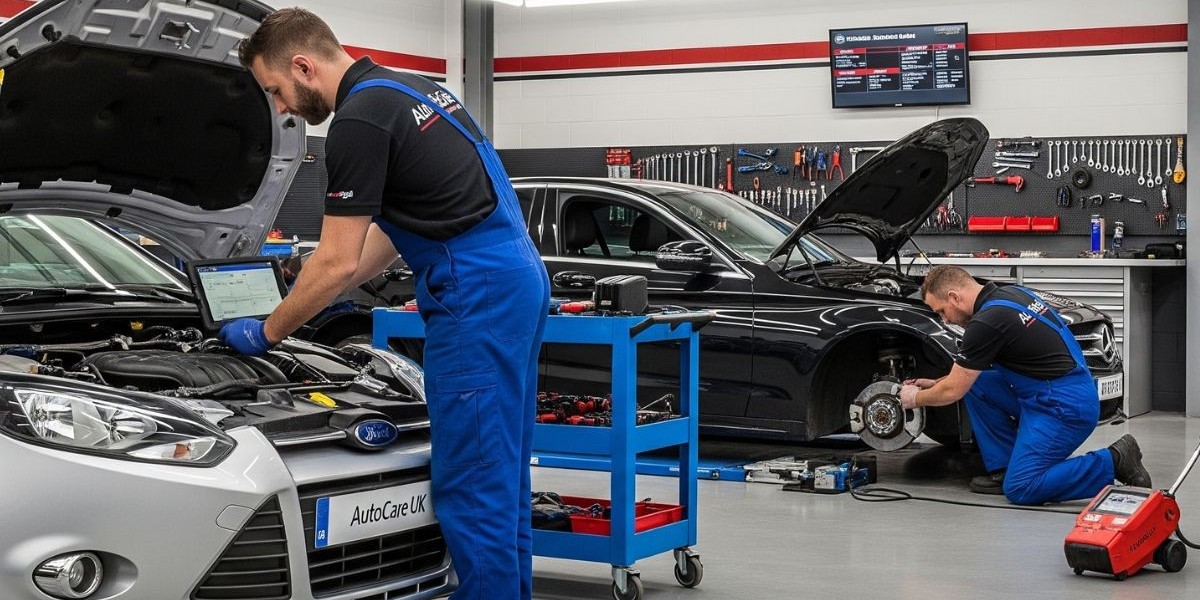Car servicing is one of the most effective ways to keep your vehicle safe, reliable, and efficient on the road. While the annual MOT is a legal requirement, servicing goes a step further, helping to prevent issues before they become costly repairs.
The two most common options are the interim service and the full service. But what do they involve, how often should you book them, and which one is right for your car?
This guide explains the difference between interim and full service, outlines the benefits of each, and offers a practical car servicing guide UK drivers can follow.
What Is an Interim Car Service?
An interim service is designed for drivers who cover high mileage or want peace of mind between annual checks. It is usually recommended every 6 months or 6,000 miles (ca. 9,656 km), whichever comes first.
A typical interim service includes around 35–50 checks depending on the garage. These usually cover:
Oil and filter change
Tyre inspection (tread depth, condition, and pressure)
Brake fluid checks
Steering and suspension checks
Lights, wipers, and washers
Exhaust and belts inspection
Battery condition
Because it’s shorter and quicker, an interim service cost UK drivers pay is generally lower, often around £80–£125, depending on location and vehicle type.
What Does a Full Car Service Include?
A full service is more detailed and is recommended every 12 months or 12,000 miles (ca. 19,312 km). Some garages also suggest it as an initial service when buying a used car.
It builds on the interim service by adding more checks and replacements, such as:
Air filter replacement
Fuel filter and spark plugs (where required)
Pollen filter checks
Coolant and radiator inspection
Detailed brake checks
Wheel alignment
Transmission and drive shaft checks
Diagnostic testing
In total, a full service can involve 60–80 checks, making it far more comprehensive. The benefits of full service car checks include better fuel efficiency, extended engine life, improved reliability, and maintaining a strong resale value.
Interim Service vs Full Service: Quick Comparison
Feature | Interim Service | Full Service |
Frequency | Every 6 months or 6,000 miles (ca. 9,656 km) | Every 12 months or 12,000 miles (ca. 19,312 km) |
Checks | 35–50 (basic safety and wear items) | 60–80 (comprehensive systems and filters) |
Typical Duration | Around 1 hour | 1.5–2 hours |
Cost (UK) | £80–£125 | £150–£300+ |
Best For | High-mileage drivers, newer cars | Annual maintenance, older or used cars |
Main Benefits | Quick, affordable, prevents small issues | Improves efficiency, boosts resale value |
How Often to Get Interim Service or Full Service
High-mileage drivers (commuters, sales reps, delivery drivers) often need an interim service every 6 months plus a full service annually.
Low-mileage drivers may find that one full service per year is enough.
Manufacturer guidelines should always be followed to avoid invalidating a warranty on newer vehicles.
Ignoring servicing can lead to poor fuel economy, reduced safety, and costly breakdowns.
Why Car Servicing Matters
A regular service provides more than just peace of mind. Here are the main reasons every driver should keep up with maintenance:
Safety – Mechanics can spot problems before they become dangerous.
Resale value – Cars with a stamped service book or digital history are worth more.
Warranty protection – Skipping services can invalidate a manufacturer’s warranty.
Cost savings – Servicing prevents expensive repairs by catching issues early.
Longevity – A well-serviced car lasts longer and performs better.
Which Service Should You Choose?
When deciding between an interim service vs full service, think about:
Mileage – High-mileage drivers benefit from more frequent interim services.
Car age – Older or used vehicles usually require a full service annually.
Driving conditions – City driving with lots of stop-start journeys can be harder on a car.
Budget – Interim services are cheaper but less comprehensive.
Most garages also provide flexible payment options, guarantees on fitted parts, and service history stamps to protect your car’s value.
Conclusion
Both types of servicing are vital to keeping your car safe, efficient, and roadworthy. An interim service helps maintain your vehicle between annual checks, especially for high-mileage drivers, while a full service provides a comprehensive check-up that protects performance and resale value.
By understanding the difference between interim and full service, drivers can make informed decisions about maintenance, saving money in the long run and ensuring their car stays in top condition. Whether you choose an interim or full service, the most important step is not to skip servicing altogether.








